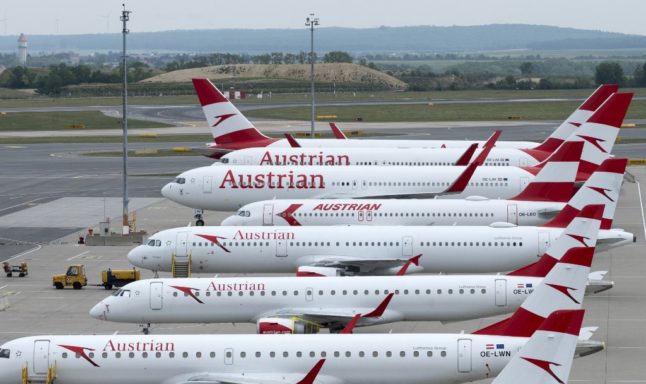In the 2023 winter flight schedule, Austrian Airlines (AUA) said it would increase its offers to and from Berlin and include a new Berlin-Innsbruck route with a weekly flight.
From January 28th to February 25th, the company will fly passengers from the German capital to the Tyrolean city on Saturdays, aiming to give winter tourists more connections and travel possibilities. The airline already has routes connecting Innsbruck to Vienna, Frankfurt, Hamburg, Stockholm and Copenhagen.
READ ALSO: REVEALED: The best websites for cross-Europe train travel
In total, Lufthansa Group airlines will fly to Innsbruck up to 48 times a week during the peak ski season, the AUA parent company said in a press release.
“With this seasonal service, we are giving our flight program to Berlin an upgrade. Our winter sports-savvy passengers will enjoy the convenience of a direct connection to Tyrol.
READ ALSO: Train travel in Austria: 6 ways you can save money
“Austrian Airlines and the Lufthansa Group significantly contribute to strengthening tourist traffic in the region with almost 50 weekly flights to Innsbruck,” says Austrian Airlines CCO Michael Trestl.
The company added that the Vienna-Berlin route would also be expanded with an additional flight on Saturdays around the semester break, the company added. This will benefit not only city tourists travelling to Vienna or Berlin but also numerous transfer passengers who travel via Vienna as a convenient hub for their onward flight.
READ MORE: Five European cities you can reach from Austria in less than five hours by train
Winter routes
Austrian Airlines is not the only company offering more rules for the winter season.
The low-cost company Ryanair announced eight new routes would be included in the program of its flight scheduled from Vienna, as The Local reported.
READ ALSO: From inflation to Covid: What to expect from Austria’s winter season
The new routes are Bremen (Germany), Manchester (England), Copenhagen (Denmark), Helsinki (Finland), Genoa and Venice (Italy), Tuzla (Bosnia and Herzegovina) and Sibiu (Romania).



 Please whitelist us to continue reading.
Please whitelist us to continue reading.
Member comments